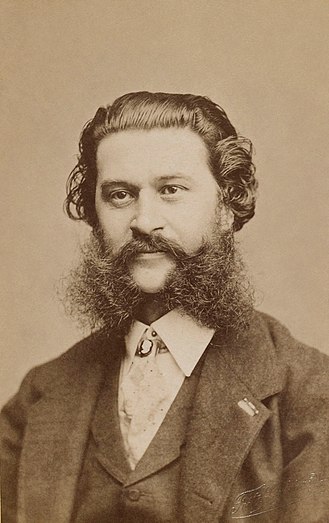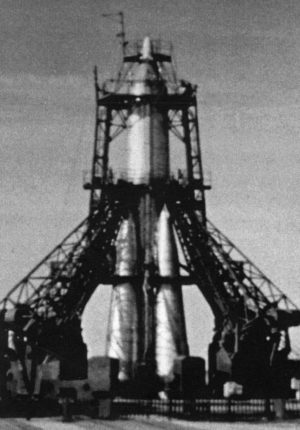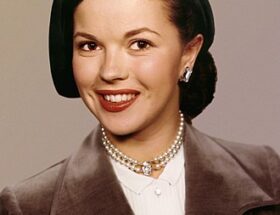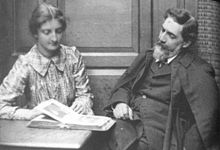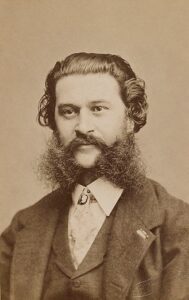
Early life
Johann Baptist Strauss was born on 25 October 1825, in St Ulrich near Vienna, Austria, to the composer Johann Strauss I and his first wife, Maria Anna Streim. His father did not want him to become a musician but rather a banker. Nevertheless, Johann Strauss Jr. studied the violin secretly as a child with the first violinist of his father’s orchestra, Franz Amon.
When his father discovered his son secretly practising on a violin one day, he gave him a severe whipping, saying that he was going to beat the music out of the boy. It seems that rather than trying to avoid a Strauss rivalry, the elder Strauss only wanted his son to escape the rigours of a musician’s life. It was only when the father abandoned his family for a mistress, Emilie Trampusch, that the Johann Strauss Jr was able to concentrate fully on a career as a composer with the support of his mother.
Johann Strauss Jr. studied counterpoint and harmony with theorist Professor Joachim Hoffmann, who owned a private music school. His talents were also recognized by composer Joseph Drechsler, who taught him exercises in harmony. It was during that time that he composed his only sacred work, the gradual Tu qui regis totum orbem (1844).
His other violin teacher, Anton Kollmann, who was the ballet répétiteur of the Vienna Court Opera, also wrote excellent testimonials for him. Armed with these, he approached the Viennese authorities to apply for a license to perform. He initially formed his small orchestra where he recruited his members at the Zur Stadt Belgrad tavern, where musicians seeking work could be hired easily.
Composing debut
Johann Strauss I’s influence over the local entertainment establishments meant that many of them were wary of offering the younger Strauss a contract for fear of angering the father. Johann Strauss Jr. was able to persuade Dommayer’s Casino in Hietzing, a suburb of Vienna, to allow him to perform. The elder Strauss, in anger at his son’s disobedience, and at that of the proprietor, refused to ever play again at Dommayer’s Casino, which had been the site of many of his earlier triumphs.
Johann Strauss Jr. made his debut at Dommayer’s in October 1844 where he performed some of his first works, such as the waltzes “Sinngedichte”, Op. 1 and “Gunstwerber”, Op. 4 and the polka “Herzenslust”, Op. 3. Critics and the press were unanimous in their praise for Strauss’s music. A critic for Der Wanderer commented that: “Strauss’s name will be worthily continued in his son; children and children’s children can look forward to the future, and three-quarter time will find a strong footing in him.”
Despite the initial fanfare, Johann Strauss Jr. found his early years as a composer difficult. However, he soon won over audiences after accepting commissions to perform away from home. The first major appointment for the young composer was his award of the honorary position of “Kapellmeister of the 2nd Vienna Citizen’s Regiment”, which had been left vacant following Joseph Lanner‘s death two years before.
Vienna was wracked by the revolutions of 1848 in the Austrian Empire and the intense rivalry between father and son became much more apparent. Johann Jr. decided to side with the revolutionaries. It was a decision that was professionally disadvantageous, as the Austrian royalty twice denied him the much coveted ‘KK Hofballmusikdirektor’ position, which was first designated especially for Johann I in recognition of his musical contributions.
Further, the younger Strauss was also arrested by the Viennese authorities for publicly playing “La Marseillaise”, but was later acquitted. The elder Strauss remained loyal to the monarchy and composed his “Radetzky March”, Op. 228, which would become one of his best-known compositions.
When the elder Strauss died from scarlet fever in Vienna in 1849, the younger Strauss merged both their orchestras and engaged in further tours.
Later, he also composed a number of patriotic marches dedicated to the Habsburg Emperor Franz Josef I, such as the “Kaiser Franz-Josef Marsch” Op. 67 and the “Kaiser Franz Josef Rettungs Jubel-Marsch” Op. 126, probably to ingratiate himself in the eyes of the new monarch, who ascended the Austrian throne after the 1848 revolution.
Gaining popularity
Johann Jr eventually attained greater fame than his father and became one of the most popular waltz composers of the era, extensively touring Austria, Poland and Germany with his orchestra. He applied for the KK Hofballmusikdirektor (Music Director of the Royal Court Balls) position, which he finally attained in 1863, after being denied several times before for his frequent brushes with the local authorities.
In 1853, due to constant mental and physical demands, Johann Jr suffered a nervous breakdown. He took a seven-week vacation in the countryside in the summer of that year on the advice of doctors. Johann‘s younger brother Josef was persuaded by his family to abandon his career as an engineer and take command of Johann‘s orchestra in the interim.
In 1855, Johann accepted commissions from the management of the Tsarskoye-Selo Railway Company of Saint Petersburg to play in Russia for the Vauxhall Pavilion at Pavlovsk in 1856. He would return to perform in Russia every year until 1865.
Later, in the 1870s, Johann Jr and his orchestra toured the United States, where he took part in the Boston Festival at the invitation of bandmaster Patrick Gilmore. He was also the lead conductor in a “Monster Concert” of over 1000 performers, performing his “Blue Danube” waltz -amongst other pieces- to great acclaim.
As was customary at the time, requests for personal mementos from celebrities were often in the form of a lock of hair. In the case of Johann Jr during his visit to America, his valet obliged by clipping Strauss’ black Newfoundland dog and providing “authentic Strauss hair” to adoring female fans. However, on account of the high volume of demand, there grew a fear that the dog may be trimmed bald.
Personal life
Johann Strauss Jr. married the singer Henrietta Treffz in 1862, and they remained together until her death in 1878. Six weeks after her death, Johann Jr married the actress Angelika Dittrich.
Angelika was not a fervent supporter of his music. Their differences in status and opinion, and especially her indiscretion, led him to seek a divorce. Johann Jr was not granted a decree of nullity by the Roman Catholic Church and therefore changed both his religion and nationality, becaming a citizen of Saxe-Coburg-Gotha in January 1887.
Johann Jr sought solace in his third wife, Adele Deutsch, whom he married in August 1887. She encouraged his creative talent to flow once more in his later years, resulting in many famous compositions, such as the operettas Der Zigeunerbaron and Waldmeister, and the waltzes “Kaiser-Walzer” Op. 437, “Kaiser Jubiläum” Op. 434, and “Klug Gretelein” Op. 462.
Admirers & rivalry with other composers
Although Johann Strauss Jr. was the most sought-after composer of dance music in the latter half of the 19th century, stiff competition was present in the form of Carl Michael Ziehrer and Émile Waldteufel, the latter of whom held a commanding position in Paris.
Phillip Fahrbach also denied the younger Strauss the commanding position of the KK Hofballmusikdirektor when the latter first applied for the post. The German operetta composer Jacques Offenbach, who made his name in Paris, also posed a challenge to Strauss in the operetta field.
Despite the occasional rivalries, Johann Jr was admired by other prominent composers such as Richard Wagner, who once admitted that he liked the waltz “Wein, Weib und Gesang” Op. 333. Another example is Richard Strauss, a composer unrelated to Johann Strauss Jr. When writing his Rosenkavalier waltzes, Richard said in reference to Johann Strauss Jr: “How could I forget the laughing genius of Vienna?”
Johannes Brahms was a personal friend of Strauss and had the waltz “Seid umschlungen, Millionen!” Op. 443, dedicated to him.
A story is told in biographies of both men, Strauss’s third wife Adele approached Brahms with a customary request that he autograph her fan. It was usual for the composer to inscribe a few measures of his best-known music and then sign his name.
Johannes Brahms, however, inscribed a few measures from the “Blue Danube”, and then wrote beneath it: “Unfortunately, NOT by Johannes Brahms.”
Operettas
The most famous of Johann Strauss Jr‘ operettas are Die Fledermaus, Eine Nacht in Venedig and Der Zigeunerbaron.
There are many dance pieces drawn from themes of his operettas, such as “Cagliostro-Walzer” Op. 370 (from Cagliostro in Wien), “O Schöner Mai” Walzer Op. 375 (from Prinz Methusalem), “Rosen aus dem Süden” Walzer Op. 388 (from Das Spitzentuch der Königin), and “Kuss-Walzer” op. 400 (from Der lustige Krieg), that have survived obscurity and become well-known.
Johann Jr also wrote an opera, Ritter Pázmán, and was in the middle of composing a ballet, Aschenbrödel, when he died in 1899.
Death & posthumous legacy
Johann Jr was diagnosed with pleuropneumonia and died on 3 June 1899 in Vienna, at the age of 73. He was buried in the Zentralfriedhof.
As a result of the efforts by Clemens Krauss, who performed a special all-Strauss programme in 1929 with the Vienna Philharmonic, Strauss‘s music is now regularly performed at the annual Vienna New Year’s Concert.
Distinguished Strauss interpreters include Willi Boskovsky, who carried on the Vorgeiger & Strauss family tradition of conducting with violin in hand, as well as Herbert von Karajan, Carlos Kleiber, Lorin Maazel, Zubin Mehta and Riccardo Muti.
In addition, the Wiener Johann Strauss Orchester, which was formed in 1966, pays tribute to the touring orchestras which once made the Strauss family so famous. In 1987, the Dutch violinist and conductor André Rieu also created a Johann Strauss Orchestra.
